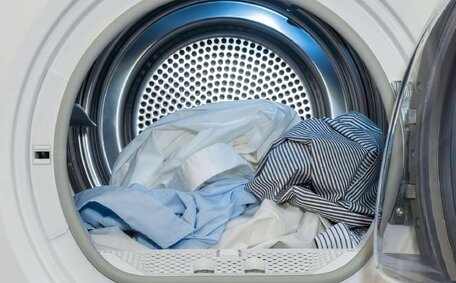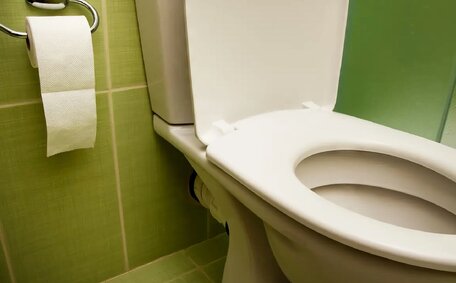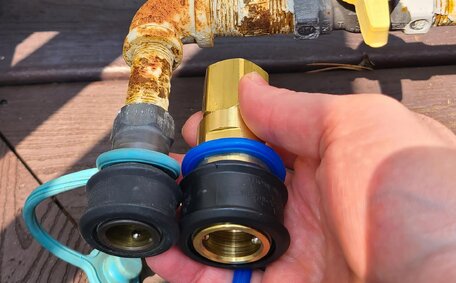Understanding Gas Fitting Work and Regulations in Australia
Gas work is essential for the operation of Australian homes and commercial entities. From heating water to stoves, and other applications that use gas, the resource keeps households running smoothly and enables commercial operations like restaurants and factories. As such an integral part of daily life, gas fitting work must adhere to strict regulations for safety and compliance.
Across Australia’s states and territories, gas fitting is overseen by government agencies that set standards and issue licences and permits. While specific requirements vary between jurisdictions, all gas fitters must demonstrate extensive knowledge and competency in areas like pipe systems, appliance installation, leak detection, ventilation and more before being approved to work legally.
Gas fitters are required to undertake accredited training, pass examinations, maintain insurance, and renew their licenses and permits at regular intervals. Severe penalties, including substantial fines and imprisonment, can be imposed for non-compliance, especially in cases of gross negligence.
Homeowners and businesses must consider planning permit requirements when installing gas appliances to ensure safety and proper execution. Major gas projects require obtaining a planning permit, and sometimes a building permit, and must be executed by a licensed gas fitter.
Types of Gas Systems and Permit Requirements
There are two main types of gas systems used in Australian homes and businesses: liquefied petroleum gas installations (LPG) and Compressed Natural Gas (CNG) systems.
LPG Systems
Installing or altering gas systems, when connecting reticulated gas network in motor vehicle applications like LPG, requires a gasfitting permit in most councils. Exact requirements differ but often include:
- Development approvals for onsite LPG storage over certain thresholds
- Plumbing permits for gas pipes and appliance connections
- Potentially also building and site permits
All LPG-related work needs to comply with AS/NZS 1596 standards for storage and handling, and must be completed by a licensed gas fitter.
CNG Systems
CNG system installations, which connect to mains, require an in-depth understanding of the gas network infrastructure. CNG is distributed to residential and commercial buildings through pipes and meters.
For new properties, permit fees are only incurred for the necessary components of most CNG-related tasks, which include:
- Installing new connect gas connections and appliance connections from the street to buildings
- Upgrading or extending pipework
- Adding or relocating gas metres
- Fitting new fixed appliances like ovens or hot water systems
Again, permits ensure work adheres to the gas installations regulations 1999 and meets Australian Standard AS/NZS 5601.1. Licenced gas fitters, especially those certified in Western Australia, must also be used.
Type A & B Gas Appliances
Within LPG and CNG systems, appliances fall into two permit categories depending on usage requirements:
- Type A - Most common residential appliances like ovens and space heaters. Approval and certification required but often permits not needed for installation.
- Type B gas appliances include commercial appliances, high gas consumption units, and those used in caravans and boats. Permits are mandatory for almost all Type B gas appliance operations.
Talk to your gas fitter if unsure whether permits apply for an appliance install or repair job.
State and Territory Specific Gas Fitting Compliance
Gas fitting regulations can vary significantly across different Australian states and territories. In New South Wales where Ryde is located, all gas work must comply with the Gas Supply Act 1996 and Gas Supply (Safety and Network Management) Regulation 2013.
In NSW, key requirements encompass:
- Holding appropriate gas work licences for the type of work being undertaken. These are issued by NSW Fair Trading after completion of accredited training for class i e gas work types. Different certifications, such as a class i for residential applications, exist for course students enrolling fulltime in general gas fitting, LPG systems, and Type B appliances.
- Submitting a certificate compliance document after any major gas fitting endeavour, providing validation that the work was completed in accordance with standards by a licenced fitter
- Notifying network operators before working on infrastructure connected to mains supply
Failure to adhere to these and other rules can result in significant fines. NSW Fair Trading imposed $1.3 million in penalties for non-compliant gas work in 2021.
In Victoria, for instance, regulations are stricter under the Gas Safety Act 1997. All premises with gas installations need biennial leak testing for appliances, failing which may result in penalties. Type B appliances also require annual inspection and servicing unlike NSW which only specifies 5 yearly.
So Though core principles like energy efficiency, permit acquisition, training, and regulatory compliance are consistent across the country, specific regulations can vary considerably among states and local councils. Gas fitters must hold an understanding of local requirements wherever they operate to avoid fines and ensure community safety.
Key Gas Safety Standards to Uphold
Safety is of the utmost importance in gas fitting work. Australia has stringent standards in place to mitigate risks and ensure the gas system is properly installed and maintained.
Crucial standards like AS/NZS 5601.1 and AS/NZS 5601.2 govern general and LPG gas installations, respectively. They dictate factors like:
- Pipe sizing, routing and connections
- Ventilation requirements
- Appliance placement Clearances
- Testing and inspection procedures
Compliance helps sidestep potentially deadly explosions, suffocation, and gas-related hazards, ensuring safety in the event of a fire emergency. For instance leaking gas can accumulate undetected and ignite from a single spark, while inadequate ventilation allows dangerous build up of fumes.
Gas standards also align with new allelectric technologies over time as technology and demands change. The 2019 edition of AS/NZS 5601.1 introduced strengthened rules around consumer gas installations and appliance isolation, particularly relevant for residential subdivisions. Meanwhile its predecessor AS/NZS 5601.2:2013 updated guidance on cylinders, joints and valves based on incidents and research.
Therefore, both installers and homeowners must diligently ensure safety and compliance. Check appliances regularly, use a licenced gas fitter for work, and confirm the necessary permits and compliance certificates are in place for peace of mind.
Hiring Licensed and Accredited Gas Fitters
When hiring a gas fitter for installation maintenance or repair work, it’s crucial they maintain appropriate licences and accreditation, ensuring that you can trust their competence and accountability.
Most states mandate completion of a Certificate III in Gas Fitting or an equivalent to attain full licensure. This entails study options that include both theoretical and practical training covering all units that professionals need to enrol and complete, such as appliance servicing, safety procedures, compliance with standards, etc.
Beyond base credentials, Ensure gas fitters possess the specific license required for the job, be it general gas fitting, LPG systems, or commercial appliances. In Tasmania a Restricted Electrical Licence also covers basic gas work.
Verify the gas fitter’s qualifications and completed training levels to ensure their issued licences are valid before hiring. This contributes to your own due diligence and safety.
In addition look for compliant businesses displaying licencing badges on websites/vehicles. Although not an absolute guarantee, it suggests that gas fitters are actively maintaining their credentials.
It is important to It is important to remember that only an accredited and licensed gas fitter can legally certify gas work. So avoid unqualified handymen or DIY to stay compliant.
Gas Fitting Permit Application Process
Applying for gas fitting permits involves submitting the right documentation to the appropriate authorities. Requirements vary across different councils and states, but some common steps include:
- Check specific needs that require planning for the proposed gas work with your local council planning office. Major jobs usually need approval buteven minor works may require notification.
- Collect all required forms, plans, compliance documents, and must provide the necessary licences. These prove eligibility to safely and legally carry out gas fitting work. Submit detailed plans with specifications for authorities to evaluate compliance.
- Submit the permit applications through approved channels, usually digitally or in person. Pay associated fees, and For a comprehensive overview of all electric home pdf details, view the full list fee schedules available in your guide.
- Expect confirmation after your application is lodged within the reviewing body’s cut-off times. Timeframes range from a few days for small jobs to a few weeks for more complex ones. Gas fitting cannot legally commence until permits are issued.
While the process, adhering to mines industry regulation and licensed under creative commons resources, varies across regions, the key is ensuring every formality and compliance requirement is met before applying. Ticking all boxes demonstrates readiness to safely undertake gas projects in line with regulations. It streamlines approval and prevents illegal work threats.
Penalties for Non-Compliance with Regulations
Performing gas fitting work without the necessary permits or licenses can lead to severe penalties. Fines of up to $220,000 and 2 years imprisonment apply under the Gas Supply Act 1996 in NSW for the highest level offences.
Consequences escalate based on factors like:
- The danger posed by non-compliant fossil gas work
- A gas fitter’s level of negligence or incompetence
- How many breaches occurred
In Victoria, the Gas Safety Act 1997 stipulates that serious violations can result in fines over $40,000 or up to 2 years in jail. Corporations can be fined over $200,000.
Beyond direct penalties, being found guilty of illegal gas work causes long term reputational damage and loss of future earning capacity once licences are revoked.
Hence, the risks associated with bypassing permit requirements or employing unqualified personnel far exceed any potential savings. Compliance is essential for any permit holder and gas fitter wanting ongoing, lawful work in the industry.
FAQs on Gas Fitting Permits in Australia
Do I need a permit for all gas fitting jobs?
To find out about the necessary permits for significant gasfitting work often involves understanding the feeresource feetotal, particularly for new system installations, upgrades, or modifications. For minor jobs, planning permit considerations may apply, with only notification to authorities required in some cases. Please view the full guidance, and To clarify permit requirements based on where you reside and the scale of work involved, view the full guidance by consulting with your gas fitter or local council.
What gas fitting jobs don’t need permits?
Permits are generally not required for basic repairs, maintenance, or replacement of existing appliances. Your gas fitter can assess if permits apply - some examples could include servicing a ducted heating unit or fixing a leak on internal pipework. Rules vary across different states so verifying with an expert is important.
How much do gas fitting permits cost?
Permit fees differ significantly depending on factors like location, scope of work, safety considerations etc. Expect for your project, you’ll only pay units that are relevant to the expenses incurred, which could vary from a few hundred dollars for straightforward tasks to potentially thousands for complex commercial endeavors. Your certified gas fitter can provide fees quoted estimates only; please view full list of possible fees, with the understanding that such fees quoted estimates are only indicators.
How long do gas fitting permits take to approve?
Timeframes range from several days for minor work approvals, up to a few weeks for in-depth assessment of major installations. Avoid delays by ensuring gas connection applications fully comply with all documentation, design, licence and other requirements before submission.
Can I do my own gas fitting work without a licence or permit?
No - all gas work in Australia must be completed by qualified, licenced professionals as per state and territory regulations. Severe fines and penalties apply to unlicenced or non-compliant gas fitting. Never attempt DIY gas work.






